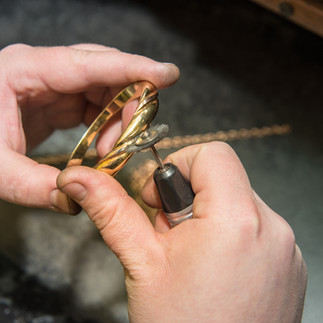"The Science of Gold: Understanding Karats and Purity"✨
- Shiva Jewellers
- May 28, 2023
- 2 min read
Updated: Oct 6, 2023
Understanding the science of gold, particularly karats and purity, can help you make informed decisions when buying gold jewelry or bullion. Here's a brief overview:
Karats (K): Karats are used to measure the purity of gold. Pure gold is 24 karats, meaning it's 99.9% pure. However, pure gold is soft and not suitable for most jewelry. To increase durability and strength, other metals are mixed with gold, creating various karat levels:
18K Gold: Contains 75% gold and 25% alloy metals, making it a popular choice for high-quality jewelry.
14K Gold: Contains 58.3% gold and 41.7% alloy metals. It's more durable than 18K gold while retaining a good gold content.
10K Gold: Contains 41.7% gold and 58.3% alloy metals. It's the most durable but has the lowest gold content among common gold alloys.
2. Alloying Metals: The choice of alloying metals influences the color and properties of gold. Common alloys include copper, silver, nickel, and zinc. For example, copper creates rose gold, while silver produces white gold.
3. Hallmarks: To identify the purity of gold, jewelry often carries hallmarks, indicating the karat or percentage of gold content. These hallmarks are typically stamped onto the piece by the manufacturer.
4. Color Variations: Different karats and alloys result in varying gold colors, from the traditional yellow gold to white gold, rose gold, and even green gold.
5. Gold Alloys in Bullion: When investing in gold bullion, it's essential to know the purity. For example, most gold bars are 99.99% pure (often called "four nines" gold). Coins may have varying purities, with some containing other metals for durability.
6. Durability vs. Purity: Higher karat gold (e.g., 18K) is softer and more prone to scratches compared to lower karats (e.g., 14K or 10K), which are more durable due to the alloy metals.
7. Allergies: Some individuals may have allergies to specific alloy metals used in gold jewelry, so it's important to be aware of the alloy composition.
Understanding the science behind gold purity and karats empowers you to select gold jewelry or bullion that suits your preferences and needs, whether you prioritize purity, durability, or a specific color. Always look for reputable sources and hallmarks when purchasing gold items to ensure their quality and authenticity.








Comments